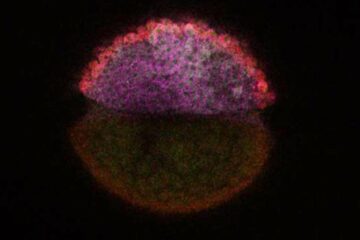Jules Verne on track for long journey to ISS

Flight control and engineering support teams analysed the data coming from the Automated Transfer Vehicle's on board computers which, after activation of the propulsion system following Sunday's launch, had detected a significant difference in pressure between the oxidiser and the fuel that compose the propellant and had disabled part of the propulsion system. A course of action was implemented overnight to resume the nominal mission.
In a complex operation, commands to re-integrate an electronics box which drives that part of the propulsion system were up-linked to the spacecraft from within the ATV Control Centre in Toulouse, France. After the entire propulsion system was disabled, all four propulsion chains were progressively enabled, thereby restoring full failure tolerance.
Jules Verne ATV successfully performed a series of orbital manoeuvres earlier this afternoon. The two manoeuvres using the main engines, which occurred at 15:54 CET (14:54 UT) and 17:06 CET (16:06 UT), initiated the orbital phasing. Two additional orbit manoeuvres tomorrow afternoon will complete the phasing boost.
Mission controllers in Toulouse are now rescheduling activities to take Jules Verne ATV to its parking orbit in front of the ISS, including a demonstration of the spacecraft's Collision Avoidance Manoeuvre capability. Once in the parking orbit, Jules Verne ATV will wait for the completion of the STS-123 Shuttle mission at the Space Station, before proceeding with the rendezvous demonstration manoeuvres and the final rendezvous and docking.
Jules Verne ATV remains on schedule for docking with the ISS on 3 April.
Media Contact
More Information:
http://www.esa.int/SPECIALS/ATV/SEMJE7M5NDF_0.htmlAll latest news from the category: Physics and Astronomy
This area deals with the fundamental laws and building blocks of nature and how they interact, the properties and the behavior of matter, and research into space and time and their structures.
innovations-report provides in-depth reports and articles on subjects such as astrophysics, laser technologies, nuclear, quantum, particle and solid-state physics, nanotechnologies, planetary research and findings (Mars, Venus) and developments related to the Hubble Telescope.
Newest articles

Attosecond core-level spectroscopy reveals real-time molecular dynamics
Chemical reactions are complex mechanisms. Many different dynamical processes are involved, affecting both the electrons and the nucleus of the present atoms. Very often the strongly coupled electron and nuclear…

Columbia researchers “unzip” 2D materials with lasers
The new technique can modify the nanostructure of bulk and 2D crystals without a cleanroom or expensive etching equipment. In a new paper published on May 1 in the journal…

Decoding development: mRNA’s role in embryo formation
A new study at Hebrew University reveals insights into mRNA regulation during embryonic development. The study combines single-cell RNA-Seq and metabolic labeling in zebrafish embryos, distinguishing between newly-transcribed and pre-existing…





















